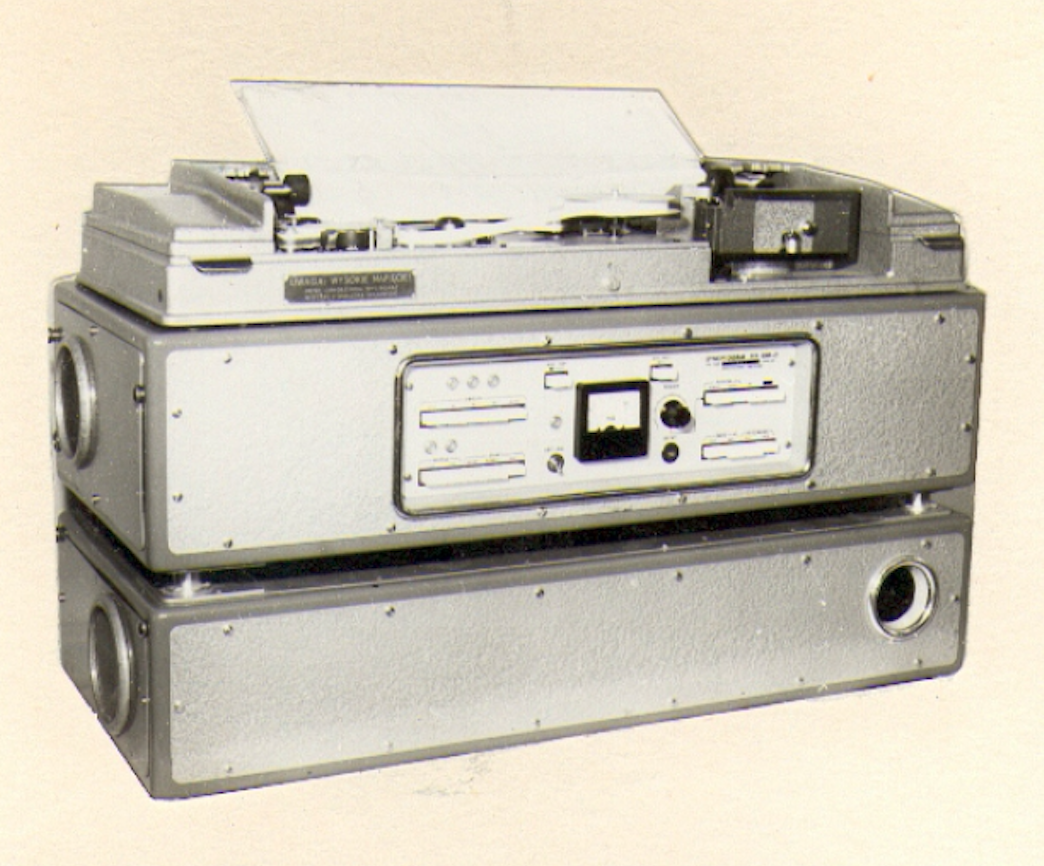2021 rok
Written by Marek Kaiper
Telecopy cameras in military aviation in the times of the Polish People's Republic.
In many state institutions of the Polish People's Republic, including the army, there was a need to send documents by radio or by telephone lines. Various types of telecopy cameras were used for this purpose, sending photographs or drawings. In the military aviation, meteorological stations and offices received radio-broadcast synoptic maps. The staffs of tactical and operational unions had the ability to send operational diagrams, maps, manuscripts, tables, typescripts, sketches and drawings, as well as other documents sent via telecopy devices via telecommunications lines. Of course, not all documents could be sent using the printing telecopy cameras of the time. Photographs were not suitable, except for photographs of sketches or technical drawings, prints from a spirit duplicator, documents made with tracing paper, documents made on thermally sensitive paper, photocopies reflected on diazo paper with heliographic copiers (ultraviolet exposure). That is, contact copying of technical drawings from tracing paper to photosensitive diazo paper (BKorS, BKorN, BFW, BFN, MP-4 and others). Special photographic cameras were used to send the photos, in which the photographic paper was irradiated upon receipt, then the cassette with the exposed paper was sent to a photographic laboratory, where the photo was developed and recorded. In the USSR, these were the drum apparatus, the transmitting F2DB "Neva" and the receiving F2PB "Neva" used in the 1960s. In the Polish Army, the TB-2P and R-348 "Massztab" devices (recording telegraphic signals on electrochemical paper) were used for special communication purposes. The R-348 cooperated with the R-250 radio receiver. F3D11 transmitting and F3P11 receiving devices were also used for special military communication.
There have been several names for telecopy machines in use, called symilographs, facsimilographs, synoptographs, and phototelegraphs. According to the type of recording, they were divided into two main groups: contrast cameras with black and white recording and tint cameras with also color recording. Sending and receiving a document is preceded by its optical analysis, in which it is divided into unfolding lines. It is the path of the light spot illuminating from one end of the document to the other. The number of unfolding lines per 1 mm is called the analysis density. When analyzing the document, an illuminating spot (unfolding spot) illuminates an element of the unfolding line, and the light reflected from it is shone onto a photocell that converts the reflected light into electrical pulses. The amount of light reflected from the white point is greater than the amount of light reflected from the black point. Moving the analyzing system along the unfolding line completely analyzes it. In the receiving apparatus, these impulses start the document synthesis process by activating the writing unit.
There are several types of recording: electromechanical, electrochemical, electrostatic, photographic, thermochemical, electrothermal, and others. Structurally, depending on the movement of the analyzing or reproducing unit, the telecopy cameras are divided into barrels with a spiral development line caused by the rotating drum with the document and the optical unit moving along it. Another solution is a stationary analyzing and recording unit and a drum rotating with simultaneous movement on a helical axis. A flat unfold is one in which the analyzing and writing unit slides across a document that is flat or unwound from a roll of paper. When the document analysis expansion or synthesis line is complete, it advances the next line. Flat recording elements can be a tape glued together in a loop reflecting the entire unfolding line on the paper, a spatial spiral, moving pins and pin lines. In the latter, the number of pins corresponds to each element of the unfolding line. Of course, during the analysis and synthesis of a document, there must be synchronization of the transmitting and receiving apparatus. They must also work on the same cooperation modules. For drum apparatuses, it is the relationship between the drum diameter, the pitch of the unfold line and the density of the unfolding line. For devices with flat analysis, this relationship is between the length of the unfolding line and the density of the unfolding line (number of lines per 1 mm). Modules for synoptographs were agreed by the World Metrology Organization (WMO) and they are 576 and 288.

Written by Marek Kaiper
